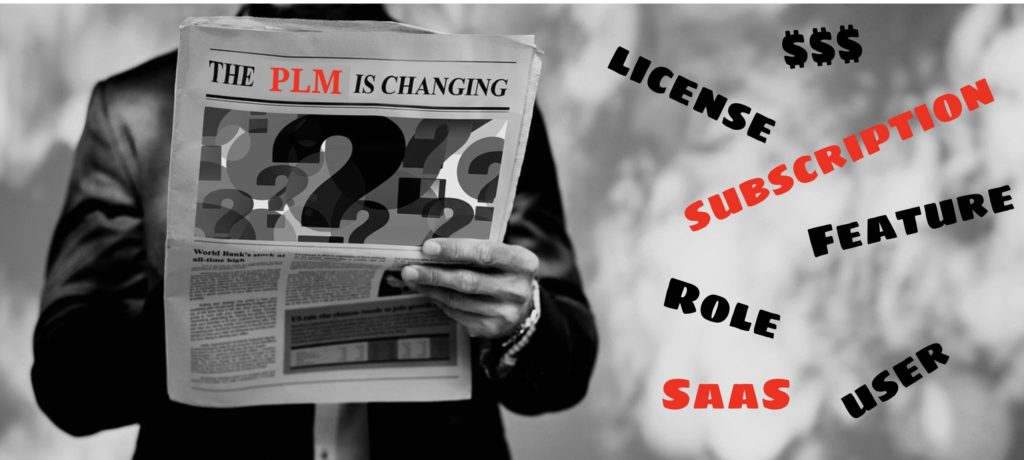
Recent PLM Stack article – Thoughts about PLM Business Model caught my attention. Check this out here. The last decades demonstrated many changes in the ways business software can be distributed and sold. New cloud technologies created tons of new opportunities to change business models. As such, companies are moving to subscriptions, which is becoming one of the most popular and widely adopted options. In CAD and PLM space, we can see how companies are abandoning perpetual license models and moving to subscription.
Unfortunately, the subscription model is not a magic bullet that solves all problems. Here is why? PLM is a complex discipline. Adoption of the PLM system in the company, multiple roles, data consumption, and many other factors created many questions about how to organize subscriptions. User-based, role-based, consumption/storage based. All these parameters are important and there is no single simple way to solve it.
So, when PLM vendors are moving to subscriptions, you should be able to see the details and understand what you buy and how. When you think about SaaS and subscriptions, you probably thinking about navigating to a website and looking for a “pricing”, right? Not so fast for PLM – with few exceptions, pricing is not available online for PLM. Check my article – Looking for the cost of PLM software online in 2019? You’re almost out of luck… Another aspect is annual or even multi-year subscriptions and special RFQs. It brings many different criteria in PLM business models.
Today, I want to talk about 3 dimensions of PLM business models I can see companies are developing these days.
1- User-counts
One of the most simple ones. Count users and pay by the number of users. The roots of this model are coming from CAD business where most of the software was always sold based on user count. It was the way PLM companies were (and still is) selling their systems. The problem of this model is in a high diversity of people’s functions. Therefore, it creates unhappiness of customers. So users are heavily creating data while some others occasionally approving changes. Why these users should pay the same asking many customers. Some PLM vendors invented “lightweight” subscriptions, but it is not so simple as it might sound.
2- Roles, modules, features
Selling “functions” is another way to slice and dice PLM subscription cake. It is hugely popular in complex enterprise deals. Multi-page pricing lists with modules, features, and tools. It is good for enterprise sales but can be a killer if a potential user tries to understand what to buy. During my recent 3DEXPEREICNE WORLD 2020 conference, I’ve seen how Dassault Systemes is presenting features and functions as roles of a “bite-size”.Using roles and modules can be a good idea to sell additional features and functions. But complexity kills, so I’d be careful in using them.
3- Subscriptions vs licenses. How technology can help?
You can see active discussions about the pros and cons of subscriptions. Two opposite camps are trying to convince each other what model is better. There is no right or wrong here. The advantages of subscriptions are an obvious absence of the high upfront license cost. But if companies are required to sign multi-year subscriptions that an entire business model can be different. In most situations, technology is one of the key reasons for multi-year subscriptions. If cloud PLM is a single-tenant and hosted, resources need to be allocated, servers installed and tenants configured. For most of these solutions, subscription works like a multi-year lease. Multi-tenant solutions are different and allow you to have elasticity in managing resources. As a result, multi-tenant systems provide more opportunities for future PLM business models.
What is my conclusion?
A new business model is a foundation of future changes in the PLM industry. When it comes to capturing underserved PLM markets or providing solutions for the supply chain, new business models can play a key role in the future success. And in the case of subscription-based PLMs, the technology can be a great enabler to achieve these results. There are many other questions – granular roles vs all-inclusive packages; counting users or not and many others. It is an interesting time to be in PLM business these days. Just my thoughts…
Best, Oleg
Disclaimer: I’m co-founder and CEO of OpenBOM developing cloud-based bill of materials and inventory management tool for manufacturing companies, hardware startups, and supply chain. My opinion can be unintentionally biased.
The post In a search of a perfect PLM business model appeared first on Beyond PLM (Product Lifecycle Management) Blog.



Be the first to post a comment.